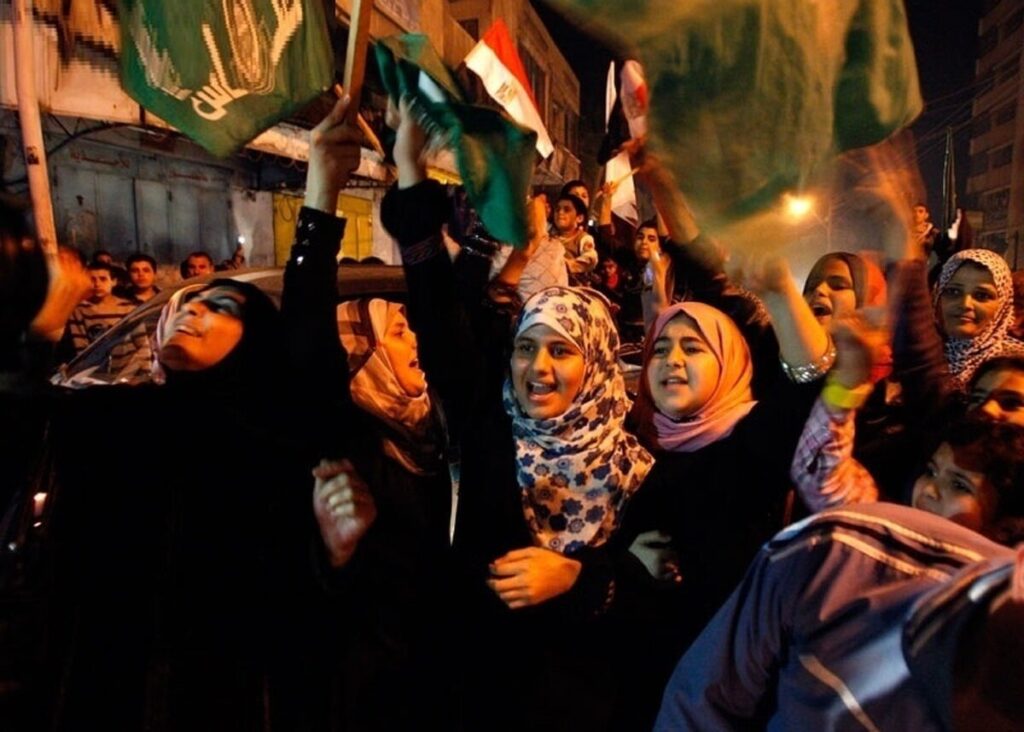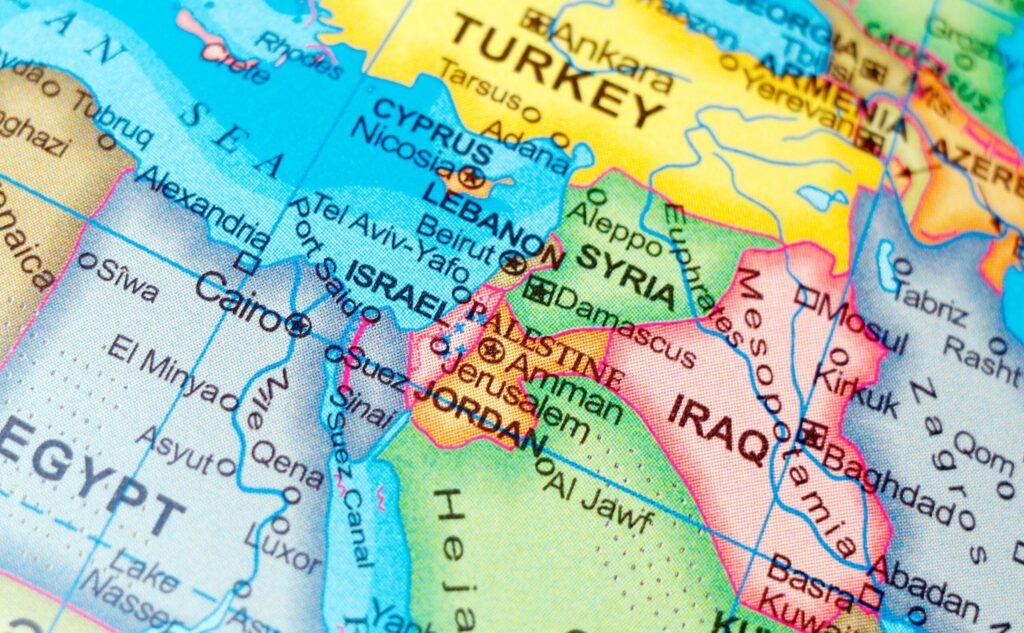UPDATES
The truth behind the wrecking ball
Nov 10, 2013 | Ahron Shapiro

“Today, the news industry is content to outsource information-gathering to public relations professionals and advocacy groups, accepting the facts they provide on trust…
An advocate, in the view of the Macquarie Dictionary, is “one who defends, vindicates or espouses a cause”. Evidence offered by advocates may or may not be correct, but there is a high risk that it may be tainted.”
“Giving up the search for truth”, Nick Cater, The Weekend Australian, October 22, 2013
THE Palestinian Authority-aligned news agency Ma’an is hardly ever used as the primary source for an article in major international outlets, and for good reason. They produce advocacy journalism for the Palestinian cause, and have a pattern of one-sided and sometimes wildly inaccurate, biased and misleading reporting. (For just a few examples, see here, here and here).
Indeed, since Ma’an launched its website in 2005, we have not been able to locate in our records a single instance of an Australian foreign correspondent using a Ma’an story as the origin of a major story without relying upon further serious independent research or other corroboration.
On November 2, however, John Lyons did just that in a story for the Weekend Australian. The story, “New wave of demolitions in Jerusalem“, was based on a story published online by Ma’an on October 31. In his story, Lyons parroted a claim by a Palestinian official that 200 buildings were threatened with demolition, potentially displacing 15,000 Palestinians (a claim that would translate to an average of 75 people per building).
(To add insult to injury, Lyons’s story in the paper was printed with a pull-quote just below the headline that read:
Ha’aretz said it was an attempt by Benjamin Netanyahu to “offset” the release of Palestinian prisoners.
The wording of the pull-quote represented, of course, a terribly damaging misreading of the article by the page editor, because Ha’aretz was not referring to housing demolitions at all, but Israel’s alleged plans to approve new housing in some of its West Bank settlements, a separate issue discussed at the end of the article.)
The Jerusalem Municipality’s response to Lyons’ own inquiry about the story was buried by the paper in the sixth and seventh paragraphs and delivered to the reader in the most perfunctory way, even though it directly refuted the Palestinian claims and should therefore have cried out for Lyons to investigate further, or at least make it clear in the lead that the claim in Ma’an was strongly disputed.
An adviser to [Jerusalem Mayor Nir] Barkat, David Koren, told The Weekend Australian: “[the posting of demolition warnings] just means the court orders the owners of the buildings to come to the courts.”
He said he did not know how many buildings were affected. Shortly afterwards, a spokeswoman for Mr Barkat said the order affected 11 structures.
Despite the huge discrepancy between the Palestinian claims and that of the Jerusalem Municipality, Lyons’ piece was rushed to print two days before Ha’aretz published a story on the matter written by Nir Hasson – a patently better researched piece.
The Ha’aretz story, while tinged with the cynicism of Israeli government policies the left-leaning paper typically uses in stories pertaining to Palestinian issues, nevertheless not only supported the Municipality’s accounting of the number of orders issued, but added some more insight and context to the developing story that Ma’an and Lyons left out.
These contextual omissions included, in part:
- The Jerusalem Municipality’s reasons for issuing the demolition orders – namely that the buildings were built without permits and that in some cases there had been land fraud (i.e., the owners built the buildings on land that they did not own).
- According to Ha’aretz‘ Hasson, the 11 demolition notices could potentially affect “hundreds” of Palestinians (certainly nowhere near the 200 buildings and 15,000 Palestinians claimed by Ma’an). However in the same sentence, Hasson explains that in practice there is almost no chance any of the demolitions will ever take place.
- Hasson explained that the reason the demolition orders were issued, given the reality that they were never expected to be carried out, was to gain leverage to bring the offenders to court in hopes of getting legal support for an imposition of fines and the recovery of unpaid fees for the required permits. (Certainly, such tactics are common in cases of unauthorised construction anywhere in the world, including Australia.)
- The Jerusalem Municipality has demolished only a small fraction of the overall number of Palestinian dwellings built illegally and without permits since 1967, and that number has declined in recent years.
This last point was addressed in May 2010 by Jerusalem Mayor Nir Barkat in his remarks to the Jerusalem Center for Public Affairs (JCPA) on the subject of illegal Palestinian construction.
Barkat said:
There are about 20,000 illegal buildings in East Jerusalem, in Arab neighbourhoods…
When people talk about demolitions, in the last decade, there were about 100 cases a year. Forty percent of the cases were of Jewish buildings and 60 percent of Arab buildings. And that’s in spite of the fact that there are about 20,000 illegal structures on the Arab side, and much less than that on the Jewish side.
Barkat added that it was estimated that half of the houses in the Arab neighbourhood of Silwan were illegal and off the tax rolls. This, he said, has made it challenging to secure funding for all of the public services that are delivered to the Arab residents of Jerusalem.
While illegal building has always been a problem in East Jerusalem, the problem has spiralled out of control in neighbourhoods behind the Security Barrier, which was constructed in 2006. Hasson’s story pointed out, correctly, that the Municipality has struggled to provide reliable services to some of these outlying areas due to security concerns, although the city maintains it is still trying to ameliorate the situation.
In May, al-Jazeera published a story on their website which painted an ugly picture of the consequences of the wave of illegal building in East Jerusalem – a situation where illegal apartment buildings are wiping out parkland and being thrown up literally in the streets themselves, narrowing roads and covering storm drains.
As ugly as the depiction of the situation was, however, uglier still were the false allegations al-Jazeera made throughout the story in order to somehow excuse or justify the preponderance of illegal construction – allegations such as that “Israel rejects more than 90 percent of Palestinian requests for building permits”.
The facts tell a radically different story. The book “Illegal Construction in Jerusalem: A Variation on an Alarming Global Phenomenon” – written by JCPA Scholar-in-Residence Justice Reid Weiner in 2003 but reflecting consistent policies in effect since the reunification of Jerusalem in 1967 and that are still relevant today – meticulously refutes many of the justifications used for Palestinian illegal construction in East Jerusalem.
(Most of Weiner’s book can be downloaded from the JCPA website at the following link, however a more concise account can be referenced in the executive summary here. Weiner writes:
One of the primary accusations leveled at the city is its alleged unwillingness to grant building permits to the Arab residents of Jerusalem. It is often claimed that the Arab residents of the city who flout the permit process do so as a last resort, since the city never or seldom issues permits for them to build legally, even when their ownership of the land is not in dispute. A few typical examples illustrate these claims. A report by the Palestinian rights organization, Al-Haq, accuses Israel of “refusing to grant them building permits,” and “[pursing a policy aimed at] altering the ethnic composition of…Jerusalem.” Similar accusations appeared in the English language Palestinian weekly newspaper The Jerusalem Times, which claimed that the “building laws in effect…pose a serious obstacle in the face of Palestinians wishing to obtain building permits,” alleging that the cost of such permits “reach[es] upward of $30,000.” This article goes further to assert that the number of permits granted is “no more than a few dozen annually, granted after a wait of one to three years.” Not one of these baseless accusations is true.
First, contrary to the claim regarding “a few dozen annually,” the average number of permits issued to Jerusalem Arabs annually during the past five years is 183, and the waiting period (for simple applications) is four to six weeks, not “one to three years.”
Further, an unfortunate result of the Palestinian Authority-enforced boycott of the Jerusalem municipality is that more Arabs do not file applications. Moreover, the percentage of applications that result in the issuance of a building permit is virtually identical in Arab and Jewish neighborhoods. Second, the fees for a building permit consist of three components, two of which are based on the city‟s efforts to recoup some of the expenses it incurs in connecting a residence to the water supply and sewage lines. For a typical housing unit in the Arab areas of Jerusalem measuring 72-square-meters (the approximate size of an average living unit) on a 250-square-meter plot of land, the following charges are assessed:
• a connection to the water system fee of 5,917 NIS ($1,220 U.S.);
• a building fee of 1,290 NIS ($266 U.S.); and
• a sewage connection fee of 10,285 NIS ($2,120 U.S.).The total for these fees comes to 17,493 NIS ($3,607 U.S.), approximately one-tenth the sum mentioned in the above-mentioned Jerusalem Times article. The fees are collected according to a sliding scale, equally in all of the neighborhoods of Jerusalem, whether Arab or Jewish.
Third, far from “strangling” Arab development, or in the words of Al Haq‟s fantastic accusation, “creating a nation of homeless and dispossessed,” the city expends considerable effort to facilitate the routine issuance of building permits to those Arab residents who apply… Al Haq‟s nonsense about strangulating Arab development is readily disproved by even a cursory look at aerial photographs in Appendix 4, not to mention the fact that since 1967 Arab building has outpaced Jewish building in the city, as discussed above. Fourth, their foray into international law, characterized by invented standards and irresponsible accusations, is rebutted in Section VI. C 3 and 4 of the accompanying book. Fifth and finally, Appendices 2, 6B and 6G of the book demonstrate that if the Arab residents who build illegally were to first try obtaining a permit, their prospects would be excellent.
In his book, Weiner also countered the accusation by pro-Palestinian groups that Israel is trying to “Judaize” the city. While the details of this refutation go beyond the scope of this blog, the best proof that no such policy exists is that the percentage of Arab residents in Jerusalem compared to Jewish residents has grown steadily since 1967.
This trend has not abated in 40 years and continues today, according to the annual statistics published by the Jerusalem Institute for Israel studies.
In conclusion, and returning again to Lyons’ article, the very construct of the story turns on its head the rule of thumb when dealing with stories that deal with potential house demolitions anywhere in the world. That common-sense rule is to give more weight to government sources and documentation over the testimony of community activists who have no incentive to remain faithful to the facts in their attempt to thwart the government’s efforts.
This is, of course, perfectly logical. If the government is the one ordering the demolitions, shouldn’t their accounting be the most accurate?
(An excellent example of this occurred in Australia earlier this year, when the Victorian government unveiled its maps for the East-West Tunnel project, as the ABC reported at the time)
While the reasons for the demolition orders are different, the authority for the issuance of the demolition orders are more or less the same – the government. There is no fundamental reason why a story about potential housing demolitions in Jerusalem should be constructed any differently than one in Melbourne.
For that matter, there is no reason why the Australian should bestow further legitimacy upon Ma’an‘s advocacy-based reporting by parroting their headlines and storylines without corroboration in the future.
In an added level of irony, in the same issue of the Weekend Australian where Lyons’ article appeared, Associate Editor Chris Kenny wrote a viewpoint lamenting the diminishing quality of journalism, while former Australian Senior Editor Nick Cater wrote a feature-length analysis along similar lines quoted from at the top of this blog post. The title of that piece was “Giving up on the search for truth”, and it was given the intro “Modern journalism risks irrelevance if it loses its hunger for the facts”.
Truer words were never spoken.
Ahron Shapiro
Postscript: On November 9, The Weekend Australian published a letter I had submitted about Lyons’ article (subscription may be required to view). While it was shortened for publication, it did highlight a few points that appear in this blog.
Tags: Israel











